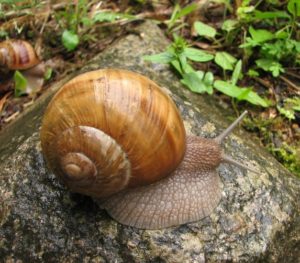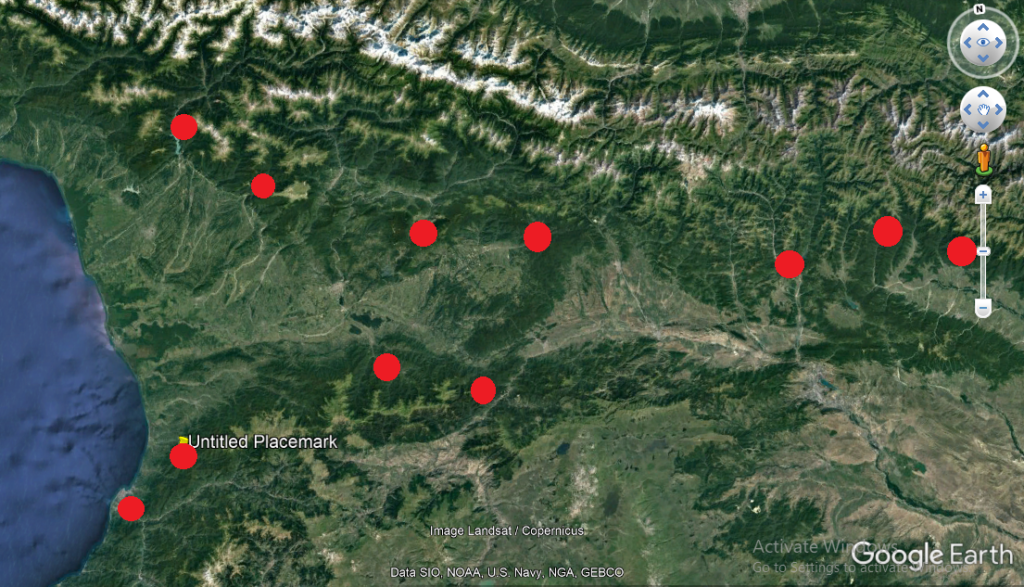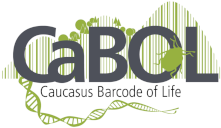The Western Caucasus is an area where important glacial refugia were located. The “Colchis refugium” has been identified already by botanists of the early XX century. The refugium contains hundreds of endemic species, or “Colchis endemics” – one can list, among the others, Caucasian rhododendron (Rhododendron caucasicum), Caucasian wingnut (Pterocarya fraxinifolia), Nordmann’s Apollo (Parnassius nordmanni), Caucasian salamander (Mertensiella caucasica), Caucasian Adder (Vipera kaznakowi) Caucasian Black Grouse (Tetrao mlokosiewiczi), or Promethe’s vole (Prometheomys schaposchnikowi). All these species are morphologically and ecologically distinct and do not occur outside the region. Others, such as sweet chestnut (Castanea sativa) were shown to survive the glacial period in the Caucasus and later spread across southern Europe.

Caucasian endemic Helix buchii
The exact location of this refugium is however much less clear. Modeling of glacial climate showed that the entire Colchis could potentially have a climate sufficiently mild for maintaining species dependent on reasonably warm and humid habitats. However, paleovegetation data suggest that during the Last Glacial Maximum (LGM), only a small area at the south-eastern Black Sea coast was covered by forest, roughly coinciding with the mountains located at the border between Georgia and Turkey; however, over the last decades, genetic studies showed that there existed smaller hidden refugia in the Colchis, separated from each other since millions of years. Populations of animals with limited mobility (e.g., salamanders or snails) occurring at these hypothesized refugiahave been separated from each other for millions of years.
Recently, scientists from Ilia State University developed a landscape distribution model for the Last Glacial Maximum, based on paleovegetation data and climate models. This model proposes the existence of three distinct forest refugia in the Western Caucasus (two of these not yet confirmed by paleovegetation data), and furthermore suggests the existence of additional smaller ones in the valleys of major rivers of the region. In 2019, within the framework of the ISU-ZFMK cooperation, we plan to validate this hypothesis by the analyzing invertebrate faunas from over 20 anticipated refugial areas (partly indicated on the map below), and by phylogeographic analysis of individual lineages. Both taxonomic expertise and barcoding capacities of ZFMK will be used in this project; sampling and sorting samples, as well as genetic analyses and modeling will be jointly conducted by Georgian and German scientists. Exploring how the geological history influences modern distribution of animals and plants on a fine geographic scale has a broad evolutionary perspective.

Putative sampling areas (red circles) in Georgia
Projects overview
